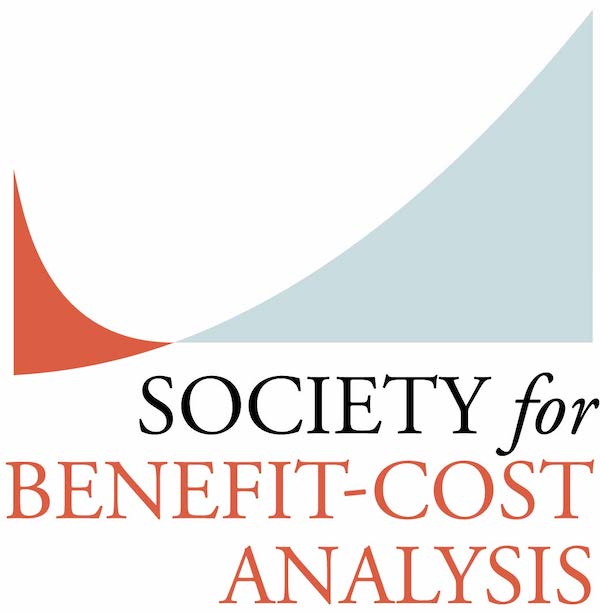On Balance: Major Questions about West Virginia v. EPA and Benefit-Cost Analysis
 On June 30, 2022, the Supreme Court of the United States decided West Virginia v. Environmental Protection Agency. The case was about whether EPA in the Clean Power Plan could set the carbon emissions standard for existing power plants at a level that would require the power plants to reduce coal use and shift to or subsidize natural gas or renewable-energy electricity generation (referred to as “generation shifting”). But the focus was not on whether such a level would be benefit-cost justified—but rather on whether the agency was allowed to set a standard requires generation shifting for compliance under this provision of the Clean Air Act. Writing for the majority, Chief Justice Roberts applied the “major questions” doctrine and concluded that EPA could not do this despite reasonable textual support for it; on issues like this one, which have “vast economic and political significance,” Congress must clearly authorize an agency to act in this way.
On June 30, 2022, the Supreme Court of the United States decided West Virginia v. Environmental Protection Agency. The case was about whether EPA in the Clean Power Plan could set the carbon emissions standard for existing power plants at a level that would require the power plants to reduce coal use and shift to or subsidize natural gas or renewable-energy electricity generation (referred to as “generation shifting”). But the focus was not on whether such a level would be benefit-cost justified—but rather on whether the agency was allowed to set a standard requires generation shifting for compliance under this provision of the Clean Air Act. Writing for the majority, Chief Justice Roberts applied the “major questions” doctrine and concluded that EPA could not do this despite reasonable textual support for it; on issues like this one, which have “vast economic and political significance,” Congress must clearly authorize an agency to act in this way.
It is tempting to conclude that this decision about statutory interpretation has no relevance for benefit-cost analysis (BCA). But unfortunately, the decision contains language that suggests the Court misunderstands and disregards the value of using BCA in federal regulatory policy.
The trouble starts when the Court appears to ignore how BCA can help agencies set stringency levels for various standards. The Clean Power Plan, for example, was supported by a BCA that concluded that the rule’s benefits to society would dwarf its costs, with $22.6 billion worth of net health and safety benefits each year in likely scenarios (EPA 2015). But the majority opinion refers to this analysis to highlight only the expected costs of EPA’s approach—without mentioning the expected benefits at all (p. 10). And more concerning, when the EPA argued that its discretion to set an emissions standard is bounded by the fact that it must consider costs, the Court suggested that this admission is itself somehow evidence that EPA’s authority was too vast (p. 25). In fact, the Court seemed to not understand how BCA could reasonably inform and constrain the agency’s choice of the stringency level—or, as the Court called it, the “emissions cap” (p. 29). The Court appeared to think EPA was unconstrained in setting the cap, calling it a cap set to “wherever the Agency sees fit” as opposed to a cap “based on some scientific, objective criterion” (p. 29-30).

 China is investing trillions of dollars in hundreds of projects, mainly infrastructures under its Belt and Road Initiative. This Initiative termed the BRI seeks to increase trade and contribute to global economic growth through increased connectivity, ports' development, building transport networks, pipelines, and other major infrastructures stretching from the northwestern part of China through Central Asia and Middle East through Africa and onwards to Europe.
China is investing trillions of dollars in hundreds of projects, mainly infrastructures under its Belt and Road Initiative. This Initiative termed the BRI seeks to increase trade and contribute to global economic growth through increased connectivity, ports' development, building transport networks, pipelines, and other major infrastructures stretching from the northwestern part of China through Central Asia and Middle East through Africa and onwards to Europe. Hedonic property value regression is a leading technique for estimating how much consumers are willing to pay for nonmarket amenities. The prevailing style of estimation has evolved in recent years to incorporate insights from the “credibility revolution” in applied economics, with high expectations for data quality and econometric transparency. At the same time, recent research has improved our understanding of how parameters identified by quasi-experimental designs relate to welfare measures. This post describes an article summarizing modern best practices for developing credible hedonic research designs and valid welfare interpretations of the estimates. I wrote the article together with Kelly Bishop, Spencer Banzhaf, Kevin Boyle, Kathrine von Gravenitz, Jaren Pope, Kerry Smith, and Christopher Timmins. It was published in the Summer 2020 issue of the Review of Environmental Economics and Policy as part of a symposium on best practices for using revealed preference methods for nonmarket valuation of environmental quality. A 20-minute video summary is posted
Hedonic property value regression is a leading technique for estimating how much consumers are willing to pay for nonmarket amenities. The prevailing style of estimation has evolved in recent years to incorporate insights from the “credibility revolution” in applied economics, with high expectations for data quality and econometric transparency. At the same time, recent research has improved our understanding of how parameters identified by quasi-experimental designs relate to welfare measures. This post describes an article summarizing modern best practices for developing credible hedonic research designs and valid welfare interpretations of the estimates. I wrote the article together with Kelly Bishop, Spencer Banzhaf, Kevin Boyle, Kathrine von Gravenitz, Jaren Pope, Kerry Smith, and Christopher Timmins. It was published in the Summer 2020 issue of the Review of Environmental Economics and Policy as part of a symposium on best practices for using revealed preference methods for nonmarket valuation of environmental quality. A 20-minute video summary is posted  Modernizing Regulatory Review, a Presidential memorandum published January 20, 2021, serves as a preface to the regulatory policies of the Biden Administration. As such, the memorandum complements three executive orders (E.O 13993: Revocation of Certain Executive Orders Concerning Federal Regulation; E.O. 13990: Protecting Public Health and the Environment and Restoring Science to Tackle the Climate Crisis; and E.O. 13979: Ensuring Democratic Accountability in Agency Rulemaking) that collectively rescind the previous administration’s regulatory policy. The regulatory policy foreshadowed in the memorandum and other documents, however, goes beyond rescinding the Trump administration’s program or restoring previous regulatory regimes.
Modernizing Regulatory Review, a Presidential memorandum published January 20, 2021, serves as a preface to the regulatory policies of the Biden Administration. As such, the memorandum complements three executive orders (E.O 13993: Revocation of Certain Executive Orders Concerning Federal Regulation; E.O. 13990: Protecting Public Health and the Environment and Restoring Science to Tackle the Climate Crisis; and E.O. 13979: Ensuring Democratic Accountability in Agency Rulemaking) that collectively rescind the previous administration’s regulatory policy. The regulatory policy foreshadowed in the memorandum and other documents, however, goes beyond rescinding the Trump administration’s program or restoring previous regulatory regimes. The revelations of the
The revelations of the  Benefit-cost analysis, as usually practiced, sums the monetary values of effects on individuals. It can be justified by the potential compensation test: if the total monetary gain to the “winners” (those who gain from a policy) exceeds the total monetary loss to the “losers” (those who are harmed), the “winners” could (in principle) pay compensation to the “losers” so that everyone would judge herself better off with the combined policy and compensation than without. The idea is that by summing the net benefits across individuals, BCA measures “efficiency” or the size of the social pie, and that questions about distribution can be evaluated separately. Logically, policies that expand the social pie permit everyone to have a bigger slice; a smaller pie guarantees that at least some people get a smaller slice.
Benefit-cost analysis, as usually practiced, sums the monetary values of effects on individuals. It can be justified by the potential compensation test: if the total monetary gain to the “winners” (those who gain from a policy) exceeds the total monetary loss to the “losers” (those who are harmed), the “winners” could (in principle) pay compensation to the “losers” so that everyone would judge herself better off with the combined policy and compensation than without. The idea is that by summing the net benefits across individuals, BCA measures “efficiency” or the size of the social pie, and that questions about distribution can be evaluated separately. Logically, policies that expand the social pie permit everyone to have a bigger slice; a smaller pie guarantees that at least some people get a smaller slice. 




 Epidemic models often generate new terms or phrases to describe their behavior. Two of these, “herd immunity” and ”flattening the curve”, have been widely misunderstood and misused in the COVID epidemic by media, policy makers and even epidemiologists, who should know better. They have been held up as goals of public health management, but there is a deep down-side of each. Achieving herd immunity is just reducing the number of susceptible hosts for the pathogen to the point that the chance of an infected individual contacting a susceptible to transmit the pathogen isN too small to support the persistence of the disease. This is achieved at the cost of terrible human suffering or by vaccination that is measurably costly and it is difficult to achieve adequately high vaccination rates. Flattening the curve just trades acute pain for chronic pain. Reducing peak suffering and health care cost is replaced by an extended period for each, with only very small reduction in summed morbidity and cost. It can allow more time for the evolution of new strains that might be less sensitive to established therapies or vaccines.
Epidemic models often generate new terms or phrases to describe their behavior. Two of these, “herd immunity” and ”flattening the curve”, have been widely misunderstood and misused in the COVID epidemic by media, policy makers and even epidemiologists, who should know better. They have been held up as goals of public health management, but there is a deep down-side of each. Achieving herd immunity is just reducing the number of susceptible hosts for the pathogen to the point that the chance of an infected individual contacting a susceptible to transmit the pathogen isN too small to support the persistence of the disease. This is achieved at the cost of terrible human suffering or by vaccination that is measurably costly and it is difficult to achieve adequately high vaccination rates. Flattening the curve just trades acute pain for chronic pain. Reducing peak suffering and health care cost is replaced by an extended period for each, with only very small reduction in summed morbidity and cost. It can allow more time for the evolution of new strains that might be less sensitive to established therapies or vaccines. Public health responses to epidemics have been developed and refined over more than five centuries of experience. In recent decades, thirteen new zoonotic infections that affect humans, from Ebola in 1976 to Middle East Respiratory Syndrome in 2012, have emerged. Based on these experiences, the CDC Field Epidemiology Manual lays out a clear set of steps for outbreak investigation and response, including the importance of communicating clearly with the public. In countries and regions where time-tested public health tools based on these steps have been used, COVID is largely under control.
Public health responses to epidemics have been developed and refined over more than five centuries of experience. In recent decades, thirteen new zoonotic infections that affect humans, from Ebola in 1976 to Middle East Respiratory Syndrome in 2012, have emerged. Based on these experiences, the CDC Field Epidemiology Manual lays out a clear set of steps for outbreak investigation and response, including the importance of communicating clearly with the public. In countries and regions where time-tested public health tools based on these steps have been used, COVID is largely under control.